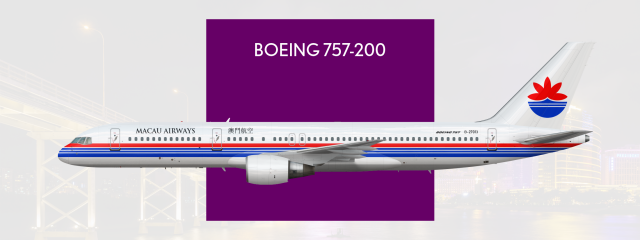
2000s: Financial difficulties and market struggles
- Owner: Avelo (View all images and albums)
- Uploaded: Jan 09 2020 08:28 PM
- Views: 832
- Album Macau Airways

The early 2000s signified a steady expansion of operations with the launch of more routes to mainland China and southeast Asia. A leased Boeing 757-200 joined the fleet in August 2001, enabling the launch of longer-range flights to Japan. In spite of a brief period of sustained growth, things suddenly took a turn for the worse in 2003 when the SARS outbreak in China led to a decline in passenger numbers which left a dent in the airline's finances as well as capacity cuts on several Chinese routes. Subsequently, the 757 was returned to the original lessor in May of that year.
In the first thirteen years of its life, Macau Airways played a special role in flying passengers between mainland China and Taiwan at a time when direct flights were non-existent. Passengers would fly from Beijing, Shanghai, and other mainland cities to a brief stopover in Macau, and then take off on a connecting flight to Taiwan—but all this changed in 2008 when direct flights over the strait finally came to life. Consequently, Macau Airways lost 60% of its transit passengers, a significant challenge to the existing business model of the airline which resulted in heavy losses. With strong support from the Government of Macau, the Central Government Liaison Office, and the Air China Group, Air China led a restructuring of the shareholding structure and helped Macau Airways out of its difficulties; part of this restructuring involved SAPSA selling its 20% stake in the airline to Air China in 2010. A second restructuring of the capital took place at the end of 2011 as well, with the Government of Macau increasing its share of the capital and Air China reducing theirs from 81% to 66.9%.
Registration: B-27013

 Sign In
Sign In Create Account
Create Account










